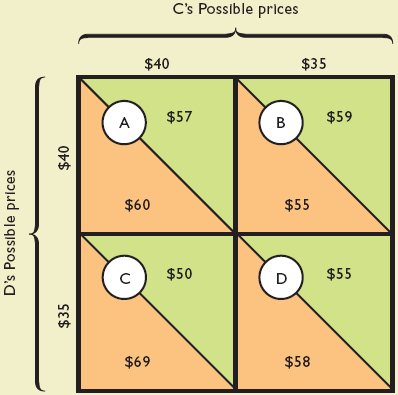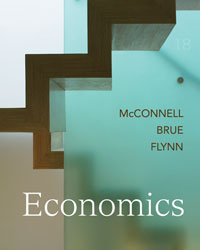
Economics (McConnell), 18th EditionChapter 11: Monopolistic Competition and Oligopoly (+ Appendix)Key Questions1. Compare the elasticity of the monopolistic competitor's demand with that of a pure competitor and a pure monopolist. Assuming identical long-run costs, compare graphically the prices and outputs that would result in the long-run under pure competition and under monopolistic competition. Contrast the two market structures in terms of productive and allocative efficiency. Explain: "Monopolistically competitive industries are characterized by too many firms, each of which produces too little." 2. Answer the following questions, which relate to measures of concentration:
3. Explain the general meaning of the following profit payoff matrix for oligopolists C and D. All profit figures are in thousands.
 4. What assumptions about a rival's response to price changes underlie the kinked-demand curve for oligopolists? Why is there a gap in the oligopolist's marginal-revenue curve? How does the kinked-demand curve explain price rigidity in oligopoly? What are the shortcomings of the kinked-demand model? 5. Why is there so much advertising in monopolistic competition and oligopoly? How does such advertising help consumers and promote efficiency? Why might it be excessive at times? |  |















